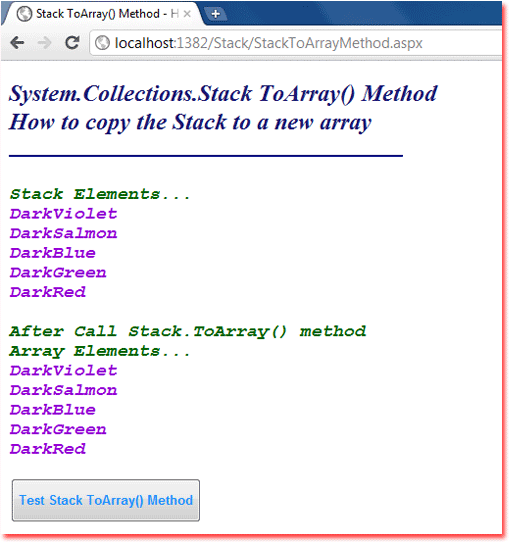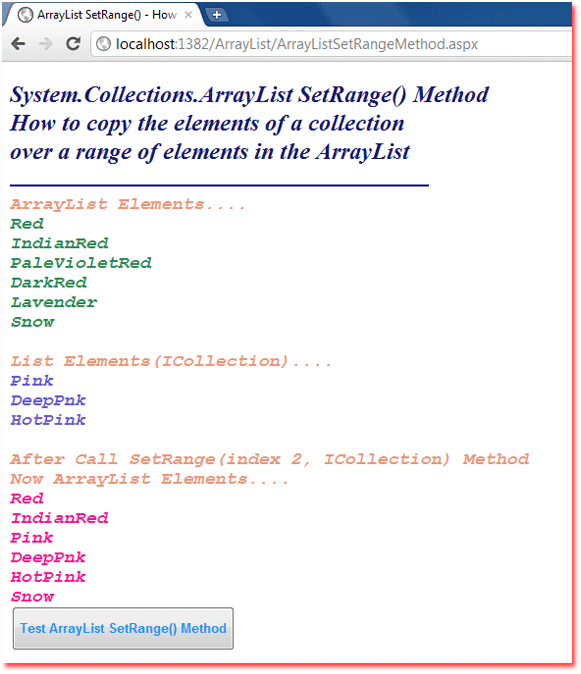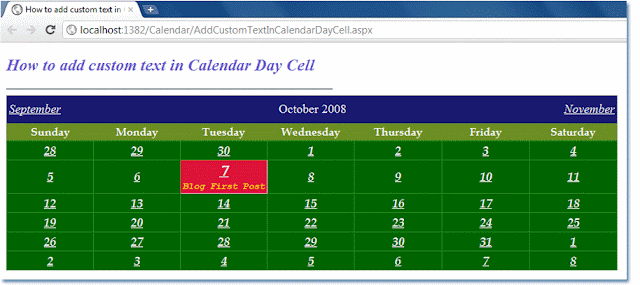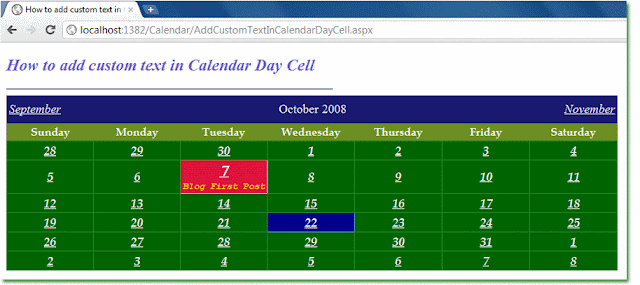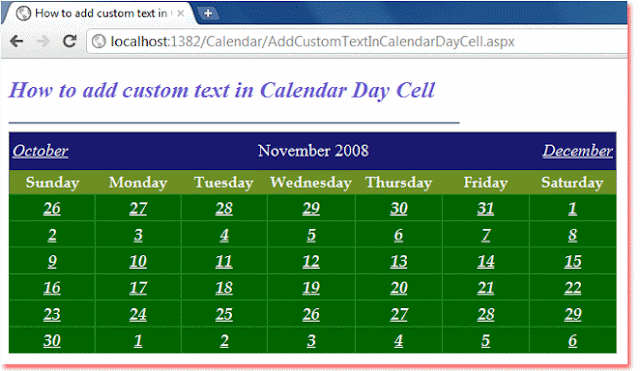Convert a Stack to an Array
The Stack class represents a simple last-in-first-out non-generic collection of objects. The Stack capacity is the number of elements it can hold. When elements are added to a Stack, its capacity is automatically increased as required through reallocation. The Stack accepts null as a valid value and allows duplicate elements.
The following .net c# tutorial code demonstrates how we convert a Stack instance to an Array instance. That means we will copy a Stack to a new Array. In this .net c# tutorial code, we used the Stack class ToArray() method to create an Array instance from a Stack object.
The Stack class ToArray() method copy the Stack to a new array. This method returns a new array containing copies of the elements of the Stack. The elements are copied onto the array in last-in-first-out order. That is similar to the order of the elements returned by a succession of calls to Pop.
StackToArrayMethod.aspx
<%@ Page Language="C#" AutoEventWireup="true" %>
<!DOCTYPE html>
<script runat="server">
protected void Button1_Click(object sender, System.EventArgs e)
{
Stack colors = new Stack();
colors.Push("DarkRed");
colors.Push("DarkGreen");
colors.Push("DarkBlue");
colors.Push("DarkSalmon");
colors.Push("DarkViolet");
Label1.Text = "Stack Elements... ";
Label1.Text += "<font color=DarkViolet>";
foreach (string color in colors)
{
Label1.Text += "<br />" + color;
}
Label1.Text += "</font>";
var colorsArray = colors.ToArray();
Label1.Text += "<br /><br />After Call Stack.ToArray() method";
Label1.Text += "<br />Array Elements...";
Label1.Text += "<font color=DarkViolet>";
for (int i = 0; i < colorsArray.Length; i++)
{
Label1.Text += "<br />" + colorsArray[i].ToString();
}
Label1.Text += "</font>";
}
</script>
<html xmlns="http://www.w3.org/1999/xhtml">
<head id="Head1" runat="server">
<title>Stack ToArray() Method - How to copy the Stack to a new array</title>
</head>
<body>
<form id="form1" runat="server">
<div>
<h2 style="color:MidnightBlue; font-style:italic;">
System.Collections.Stack ToArray() Method
<br /> How to copy the Stack to a new array
</h2>
<hr width="400" align="left" color="Navy" />
<br />
<asp:Label
ID="Label1"
runat="server"
ForeColor="DarkGreen"
Font-Size="Large"
Font-Names="Courier New"
Font-Italic="true"
Font-Bold="true"
>
</asp:Label>
<br /><br />
<asp:Button
ID="Button1"
runat="server"
OnClick="Button1_Click"
Text="Test Stack ToArray() Method"
Height="45"
Font-Bold="true"
ForeColor="DodgerBlue"
/>
</div>
</form>
</body>
</html>
